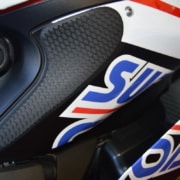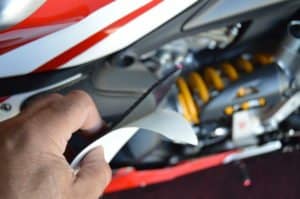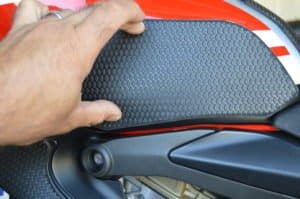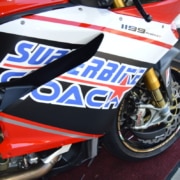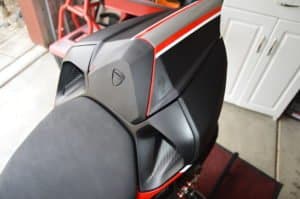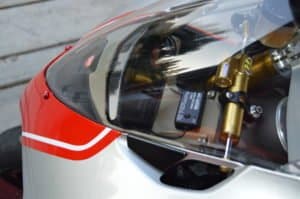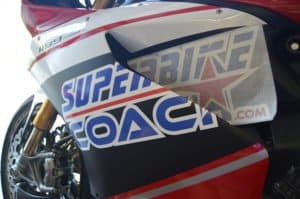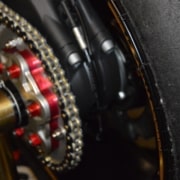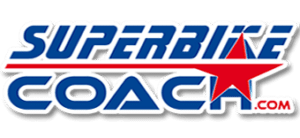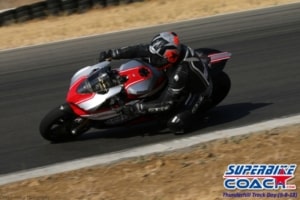If you are not a professional MotoGP racer, you probably won’t get much attention of a helmet factory. While these boys getting spoiled beyond the actual design- they also have customized shells and liner/pads to give the perfect fit- while you have to deal with standardized sizing.

So, based on these facts you should not have problem to find a decent size for your noodle, if it’s not extremely out of shape. The problems are mostly the riders themselves when purchasing a new lid- or, sometimes untrained motorcycle gear staffs who often seem to pick a size for their customers to reduce stock.
No, I’m not pulling this out of the blue… I’m seeing almost every day that especially brand new riders (which are mostly depending on size suggestions of that kind) who are coming to Superbike-Coach classes or 1on1- that their helmets dangling around on their heads or even bouncing down to their noses. Don’t laugh, that is really happening.
Let’s have a look at how important it is to pick the right helmet size in general, so here is my logic:
- bounces into sight
- can cause more injury as necessary
- can even fly off your head as you crash
- shaking can cause distraction
- might feels OK in the store, but not comfy on the ride
How do I know?!… I’ve been there. I am a burned child, because my helmet flew off my head at my first ever crash. Of course it was all closed, but the quality back then compared to today- oh gee… my Arai Corsair is like a Ferrari around my head today. I’ve picked that helmet back then myself too, and I didn’t spend much of a attention to it as well. So here are two things I’ve learned, how a helmet has to be in the first place:
- Damn expensive
- Snug as hell
Let me explain point one. The price of a helmet displays its quality and that includes the test procedures a product like this underlays, materials, safety features, functionality, aerodynamics and tests, design, testing staff (racers often included). All of this becomes handy for you when crashing. At that point I should remind that you have only that one head which hosts your most valuable organ, and that should be prioritized over some fancy rear sets.
Point two is easy to put. I have my lids sitting so snug that I barley get in and out. I witnessed it ones, that a girl at a retailer chose a helmet she got easier in/out with. Horrible! It got to sit so snug that there is no way that you could move it around on your head- or to wiggle your head and to slide the sit of the helmet. I think of ‘as snug as possible’. It might doesn’t feel right in the store, but you’ll appreciate it as soon the wind starts playing with it.
So how to start this out?!
Have a friend measuring your head to evaluate the base size of your lid (Arai chart above). That will be also THE MAXIMAL BIGGEST SIZE YOU’LL PICK. Try now the next smaller one and see how much pain you can take :-)
With each size you try this: Shake, wiggle, try pulling it off (closed strap), if your ears are not squeezed, if your nose doesn’t touch the chin guard. The moment where your skin and scalp sticks with the lining… you’re good. Any additional movement shouldn’t be tolerated. If you hang between sizes- invest in different pads to make the helmet yours. You’ll get use to it as long your nose and ears have some clearance in there. I personally use size M for my Arai Corsairs and add a pad on top of my head because I like it sits slight higher, but let me explain that and more in my little video below:
Headcoach Can Akkaya Video Blog



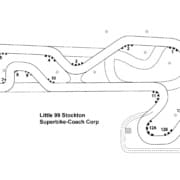


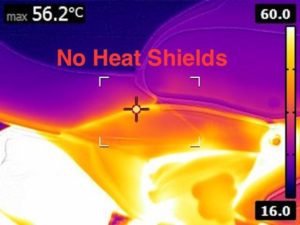
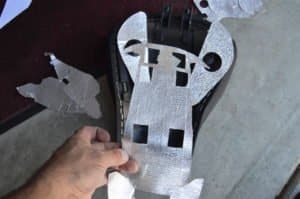 I was actually planning to get me some heat shield mattes and to cover everything on a logical bases to block or to lead hot air. The ‘good’ material which is in use by NASA, Formula 1 and MotoGP is expensive though, and I would have to puzzle it… but then I found the “
I was actually planning to get me some heat shield mattes and to cover everything on a logical bases to block or to lead hot air. The ‘good’ material which is in use by NASA, Formula 1 and MotoGP is expensive though, and I would have to puzzle it… but then I found the “
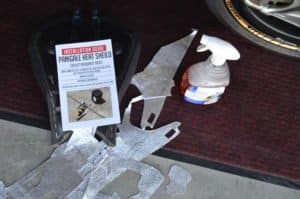 So, thanks to ‘
So, thanks to ‘